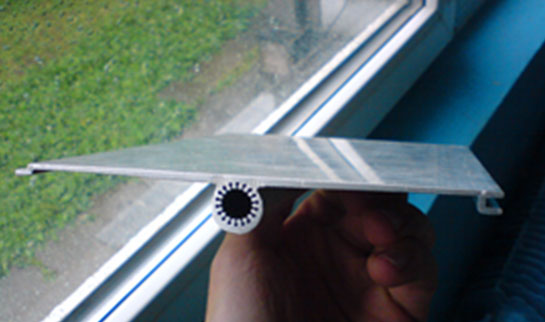Development and investigation of photovoltaic-thermal module based on aluminium heat pipes for the efficient conversion of solar energy to electricity and heat
New technical solution of photovoltaic thermal module for simultaneous conversion of solar energy into heat and electricity was created. The mock-ups of aluminium heat pipes and photovoltaic-thermal module were developed and fabricated during projects. As well thermal tests of aluminium heat pipes, thermal and electrical characteristics of photovoltaics thermal module were performed that confirms the prospect of their application. The technology of production of aluminum heat pipe for photovoltaic-thermal module which is including the processes of working fluid preparation and heat pipes container, as well as filling and encapsulating, were developed. The performances (heat transfer intensity in evaporation and condensation zones, thermal resistance, maximal heat flux in evaporation zone and maximal heat transfer ability) of aluminium heat pipes which were filling by acetone and pentane were obtained. Developed heat pipes are capable of providing a photovoltaic-thermal module operation from the 00C up to 120 0C. In this case the temperature of their operating range is from - 40 0C and + 230 0C.
The performances (such as thermal and electrical efficiency, the rate of heating of the water, the current-voltage characteristic) of the photovoltaic-thermal module mock-up and their dependence on operation conditions (solar flux density, ambient temperature) and working fluid flow in the system were defined. The optimal operation modes of the photovoltaic-thermal module were obtained on theoretical analysis bases. It is proved that the photovoltaic-thermal module has a better efficiency than separate thermal solar collectors and photovoltaic panels at low temperatures of the absorbing surface (below 50 0C) and generally at higher solar flux (more than 600 W/m2). Analysis of the calculations and the experimental data showed that developed photovoltaic-thermal module can improve the efficiency of electricity generation up to 23% by cooling of the photovoltaic cells. At same time its maximum electric power was 135 W/m2. In addition simultaneously, it’s possible to reach up to 457 watts of heat from 1 m2 of the absorbing surface at the working fluid temperature of 25 0C and the solar flux density of 900 W/m2.

| Attachment | Size |
|---|---|
| 426.05 KB |




